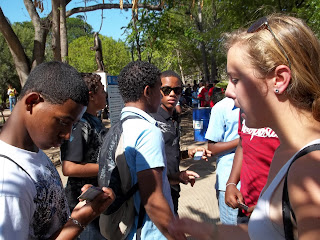In this developing nation “on permanent hold,” Cite Soleil is a section of Port-au-Prince known for its extreme poverty and violent neighborhoods controlled by truly ruthless gangs. Unfairly or not, Haitians themselves uniformly describe the area as a living hell. Even tough police fear to tread here. Similar to any ghetto, regular citizens cannot enter without navigating the complicated red tape and in fact, paying protection by arranging an armed guard. According to sources in government and the medical sector, even NGOs and recognized charitable organizations must pay. Only the Catholic nuns that have long labored in this township have relative immunity from kidnapping and physical danger. Its populace used to favor Aristide the deposed President until he recently returned from exile.
In 2004, when Aristide’s popularity was on the wane, street demonstrations were seen, and talk of a coup was heard, I was in Haiti and visited Cite Soleil under unusual circumstances. A concierge at a hotel for foreigners was impressed by my street outreach and willingness to interact with regular youth who were often ignored by foreigners. Originally from Cite Soleil, he asked if I would come to his neighborhood under the protection of a gang leader, his cousin or something. I immediately said yes. A beat up taxi appeared outside the hotel the next afternoon, and I was driven into a rough area where we stopped at a single story house (sorry but you will have to wait until my book to hear the rest of the encounter).
This trip, I wanted to revisit the neighborhood but I no longer had a working number for the concierage or his hotel. So I mentioned my interest to a few IAS colleagues. One suggested I contact Dr. Bill Pape and he suggested the organization FOSREF that does AIDS prevention in two centers there. They reluctantly agreed to bring us.
Approaching Cite Soleil, I saw two soldiers/police in full body armor with guns at the ready – something you do not see in ordinary neighborhoods of Port-au-Prince although most businesses and many private homes have armed security. Our host said I must not go there -- even the FOSREF representatives that work on the outskirts of Cite Soleil also expressed fear for their safety if they attempted to walk the streets. We spent time with Cite Soleil outreach workers, a tough-minded but sincerely dedicated group doing HIV outreach. They said they could not bring me to the streets. so we settled for a group of lovely teen girls to talk to about spreading the message.










































